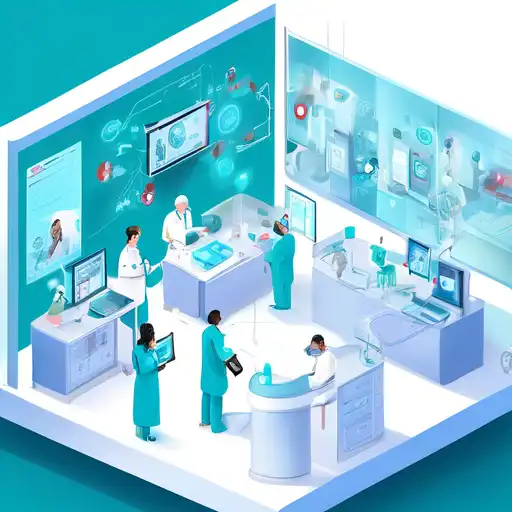Introduction to IoT in Healthcare
The Internet of Things (IoT) is revolutionizing various sectors, and healthcare is no exception. By integrating IoT devices into medical services, healthcare providers can offer more personalized, efficient, and proactive care. This article explores the transformative impact of IoT on healthcare services, highlighting key benefits and applications.
Enhanced Patient Monitoring
One of the most significant contributions of IoT in healthcare is the ability to monitor patients in real-time. Wearable devices and sensors can track vital signs such as heart rate, blood pressure, and glucose levels, transmitting this data directly to healthcare professionals. This continuous monitoring allows for timely interventions, reducing hospital readmissions and improving patient outcomes.
Improved Medication Management
IoT-enabled smart pill dispensers and medication tracking systems ensure patients adhere to their prescribed treatment plans. These devices can alert patients when it's time to take their medication and notify caregivers if doses are missed. This technology is particularly beneficial for elderly patients or those with chronic conditions.
Streamlined Hospital Operations
IoT devices are also optimizing hospital operations. Smart beds equipped with sensors can monitor patient movements and adjust positions to prevent bedsores. Additionally, IoT-enabled asset tracking systems help hospitals manage equipment efficiently, reducing costs and improving service delivery.
Remote Patient Care
Telemedicine, powered by IoT, allows healthcare providers to offer remote consultations and follow-ups. This is especially valuable for patients in rural or underserved areas, who may not have easy access to medical facilities. Remote care not only enhances accessibility but also reduces the burden on healthcare systems.
Data-Driven Decision Making
The vast amount of data generated by IoT devices enables healthcare providers to make informed decisions. Advanced analytics can identify trends and predict potential health issues, allowing for preventive measures. This data-driven approach leads to better patient care and more efficient resource allocation.
Challenges and Considerations
While IoT offers numerous benefits, it also presents challenges such as data security and privacy concerns. Ensuring the confidentiality and integrity of patient data is paramount. Healthcare providers must implement robust cybersecurity measures to protect sensitive information.
Conclusion
The integration of IoT in healthcare is transforming the way medical services are delivered. From enhanced patient monitoring to streamlined hospital operations, IoT is improving efficiency, accessibility, and quality of care. As technology continues to evolve, the potential for IoT in healthcare is limitless, promising a future where medical services are more personalized and proactive.
For more insights on how technology is shaping healthcare, explore our articles on digital health and medical technology.
